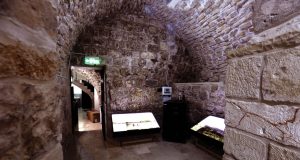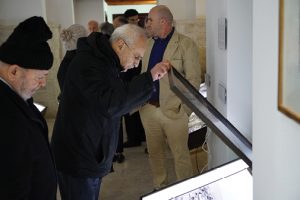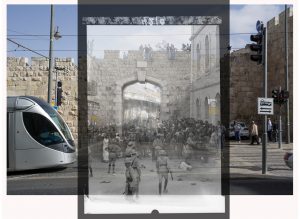Courtesy of VisitPalestine.ps
Having just recently opened its doors in December 2018, the Musa Afandi Interpretation Center (MAIC) is an exciting new force in achieving greater understanding of what the boundlessly profound and immensely complex city of Jerusalem actually is, both throughout history and today. The center recognizes that Jerusalem’s depth and color cannot be accurately depicted by words and facts alone but must be experienced with our senses, hence its emphasis on personal interpretation. Here, right in the heart of Jerusalem’s vibrant Old City, visitors are encouraged to see, touch, and even taste their way to a connection with Jerusalem’s diverse communities, its complex history, its forgotten sites.
Fueled by a need for a consolidated and community-driven focal point to the Palestinian narrative in Jerusalem, the MAIC acts as a welcoming space for locals and foreigners alike. It is in the midst of establishing itself as a tour hub, a training facility, and a coffee shop, as well as hosting permanent and rotating exhibits on historical, artistic, and cultural topics experienced in an interactive way.
Currently featured is Jack Persekian’s fascinating and insightful gallery of matching photographs, composed of early twentieth-century images of Jerusalem (courtesy of the American Colony Photographers) aligned with current-day images of the same locations. Having been captured from the same angles, these images are arranged on top of each other but offer visitors the option to lift off the modern layer to compare it with the antiquated version below. What can be experienced here is a visually engaging and readily apparent comparison of the old and new – one image shows camels in the streets where we now find cars, another offers a glimpse of the late Jaffa Gate clock tower, demolished in 1922, and in all cases, the vegetation and topography contours reflecting the changing times, yet hinting at the similarities. This, like many of the efforts of the MAIC, attempts to link Jerusalemites with their past.
Persekian’s exhibit will remain until around Ramadan, when the MAIC will unveil its permanent gallery as well as introduce other temporary exhibits that aim to incorporate virtual reality (VR), local cuisines, traditional costumes, and hands-on 3-D models.
The MAIC is a cooperative and collaborative endeavor among many essential groups, each of which contributes to what is not possible alone. It takes local artists and organizers to dream up and envision the exhibits, local craftsmen to implement them, donors to fund them, and volunteers for support. Local elders become indispensable with the wealth of archival knowledge that they are able to provide. The center’s intention is to clarify the Jerusalem experience while giving visitors and the community the chance to interact and interpret their own personal connection to the city.








